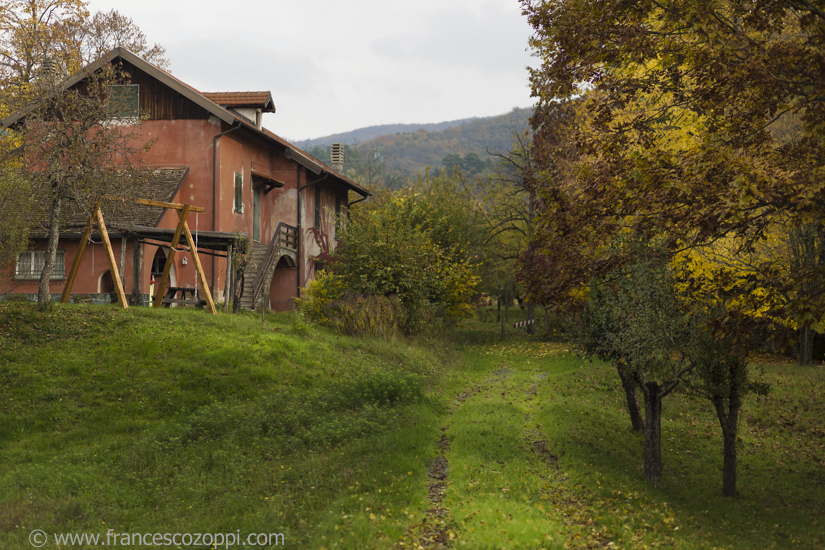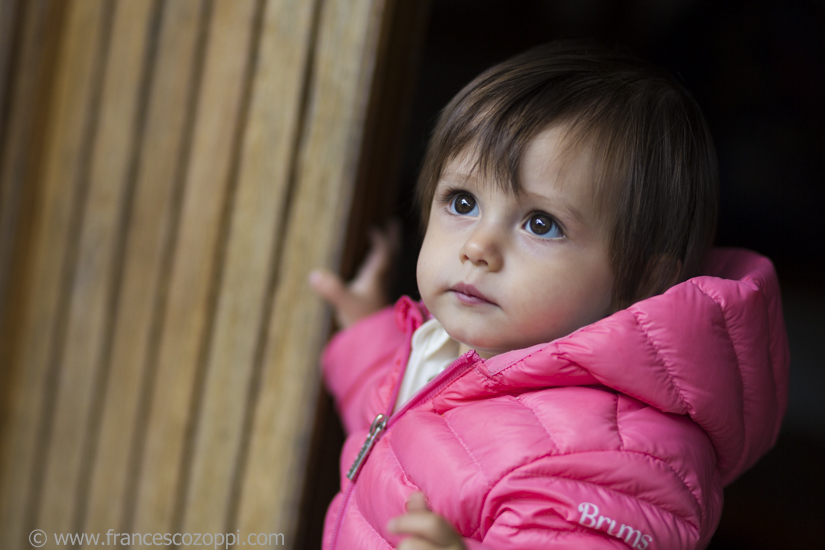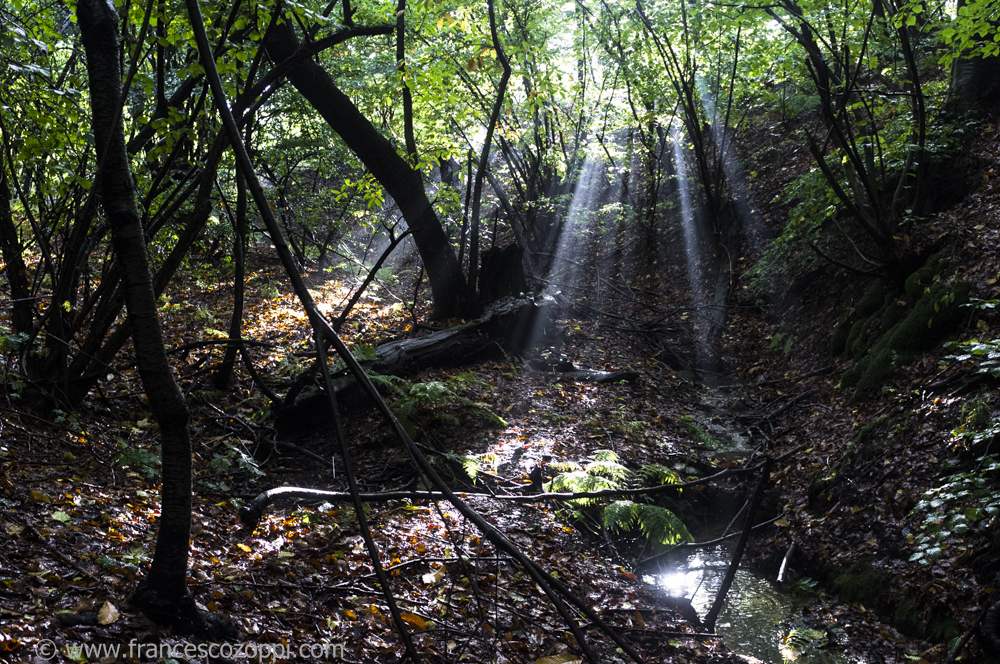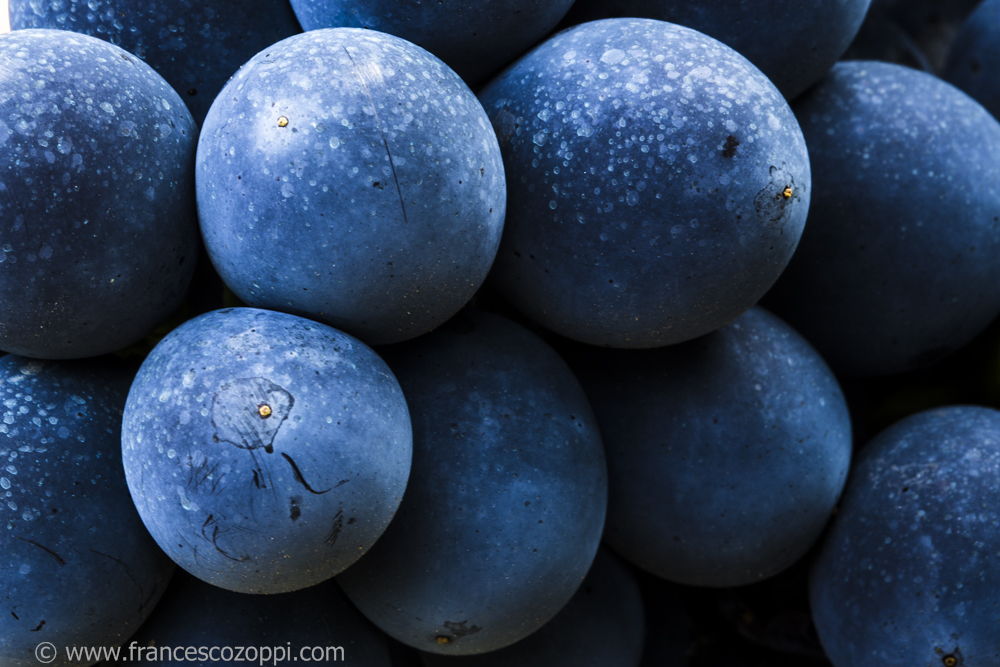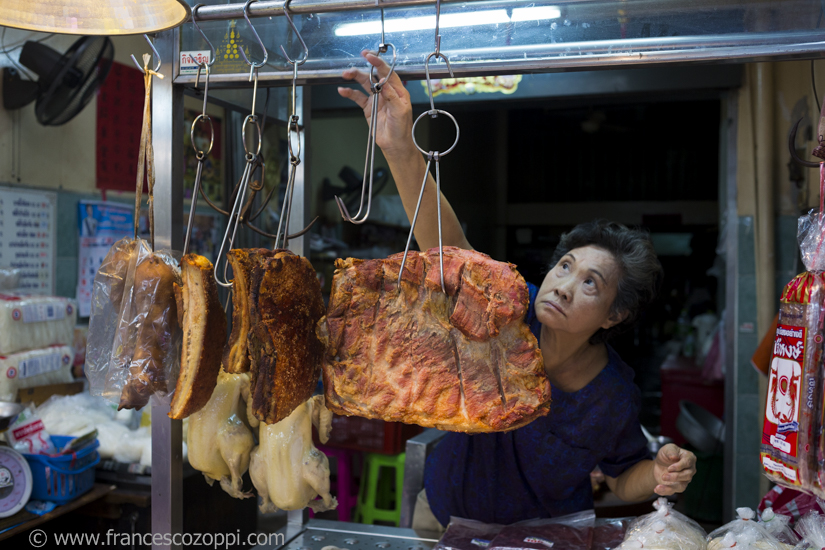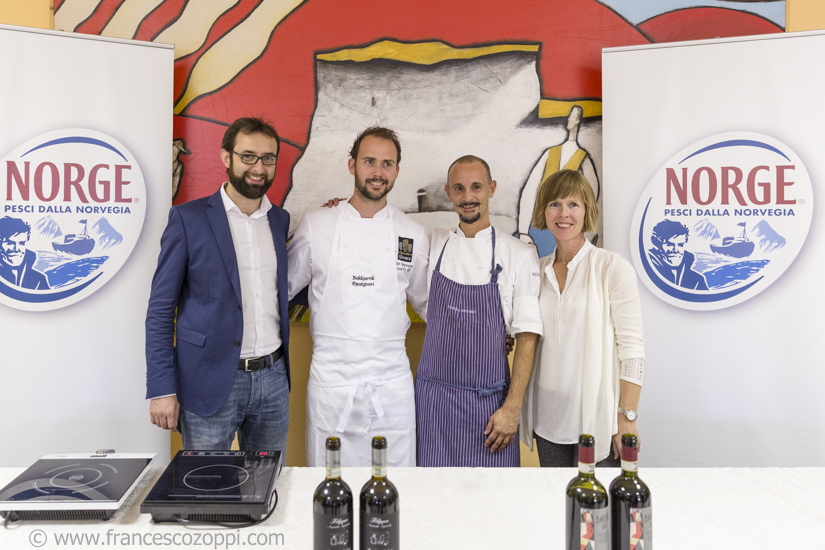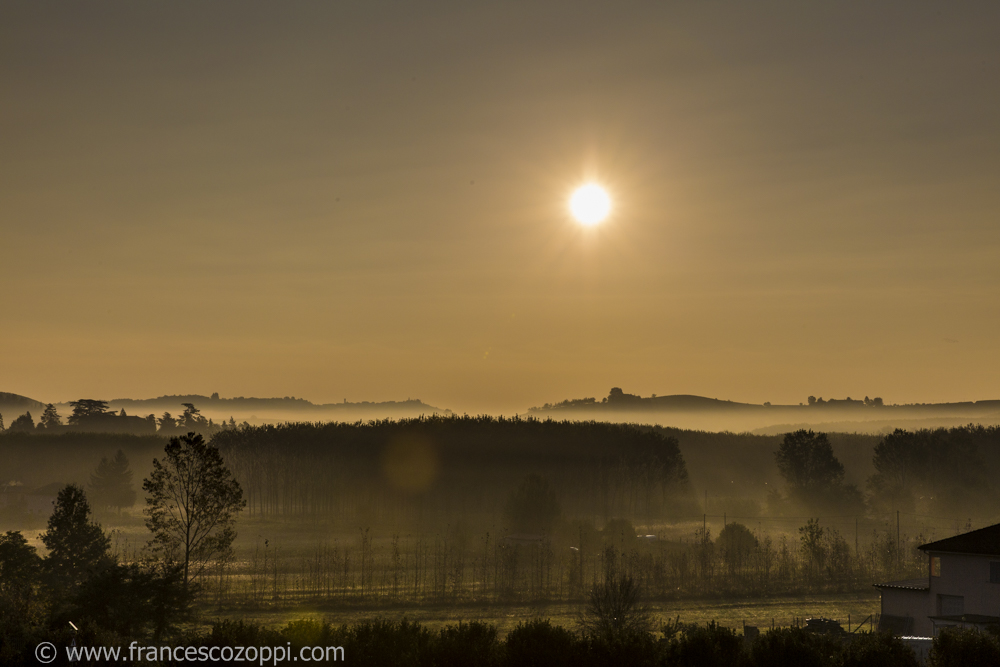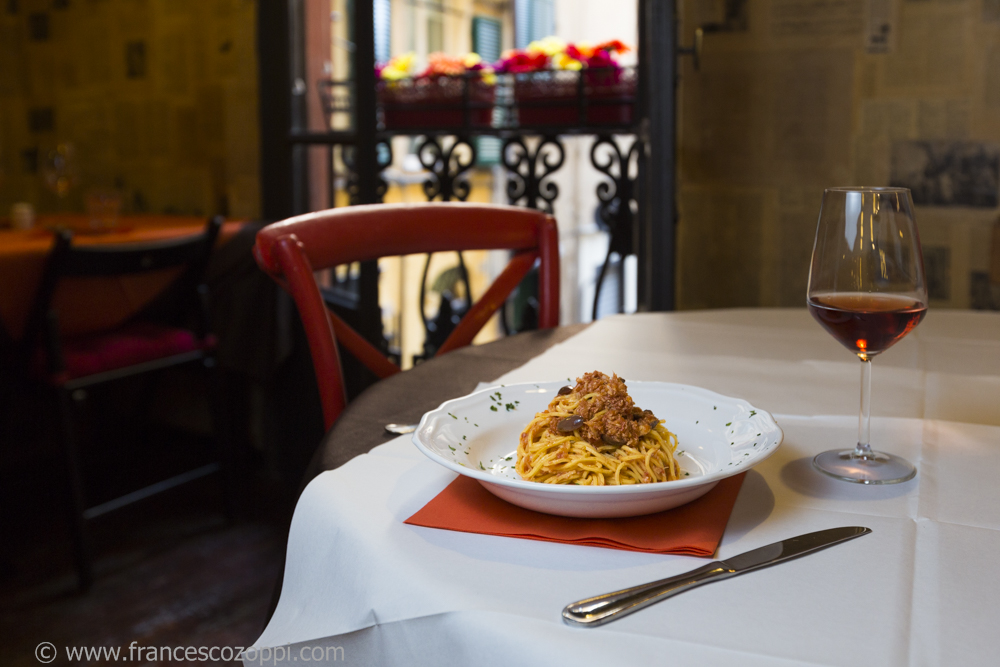Si muore tutte le sere, si rinasce tutte le mattine: è così. E tra le due cose c’è il mondo dei sogni. (Henri Cartier-Bresson)
Barbera is a dark-skinned wine grape variety found in several Italian wine regions, including its native Piedmont, Emilia-Romagna, Puglia, Campania and even the island regions, Sicily and Sardinia. At the turn of the 21st Century, it was Italy’s third most-commonly planted red wine grape, after Sangiovese and Montepulciano. Barbera grapes are used both in blended wines and varietals – the latter are becoming increasingly common as Italy continues its move towards varietal labeling.
Barbera (like so many Italian wine grape varieties) has ancient origins, although it has only been traceably documented since the 17th Century. It was first cited in an official document in 1798, by Count Giuseppe Nuvolone-Pergamo of Scandaluzzo, deputy director of the Società Agraria di Torino (Agrarian Society of Turin). The count is credited with creating the first definitive list of Piedmont’s wine grape varieties. Barbera-based wines were well regarded even then, for their rustic-yet-generous character. They were a favorite among Savoyard army officers, who considered the wine a “sincere companion”, which helped them maintain their courage in battle.
Barbera is the third most widely planted red grape variety in Italy though it is most common in the Asti and Alba regions. Barbera grapes produce rich, red wines with strong fruit flavors and aromas, especially black cherry. Other characteristics of wines made with Barbera grapes include low, mild tannins and high acidity which produces a crisp taste.
Barbera wines are traditionally aged in large casks which impart little oak flavor, but some today are aged in small French oak barrels, leading to strong oak flavors. Aging in smaller casks also imparts more tannins to the Barbera wines. (http://wine-tasting-reviews.com; http://www.wine-searcher.com)
A travel across Thailand and Laos discovering the most popular street food in the world.
Every street corner offers small food carts, they are used as kitchens and they propose every kind of local dishes, fruits and vegetables, meet, fish and all kind of soups and sweets, strating from the sunrise. It doesn’t matter if the food is raw , grilled, roasted, fried, boiled, or dried: there is not fixed time to eat, you can always stop and taste something new, it’s up to you. Thai street food has been influenced very clearly by Chinese culture and traditions; it’s not just a coincidence that in Bangkok you can find Chinatown, one of the most vital and peculiar neighborhood where it’s normal to see ducks and porcs hung in plain sight, in front of many shops. Markets are very peculiar too, mainly of 2 types: morning markets, opened very early in the mornings until 12 o’clock, more or less, and night markets, opened in the end of the day till late in the night. Markets are family run: parents work to prepare the open-air booths while the little ones play in the street, when possible, but when everything is ready they actively help adults in the trade rituals. Sometimes the streets get closed to the traffic to host the open-air markets, like it happens in Chiang Mai with the Saturday Walking Street. Not only food but fabrics and gadgets of every kind are presented to customers and the shop keepers are the first eating street food: it’s easy to see women behind the merchandise having a simple meal waiting for customers to arrive or a little girl sit in the back of the shop while she’s trying to wake up.When there is not enough space for market, it is possible to follow the old railway path and bumo into other carts and shops, still loaded with food, obsession, tradition or simply the easiest economical resource.
16 Ottobre giornata mondiale dell’alimentazione.
“Lo specchio dell’anima”
La serie di foto intende affrontare aspetti legati ai disturbi alimentari come l’anoressia , l’obesità e la bulimia. Queste malattie psicogene sono da ricondursi a mancanze, maltrattamenti subiti o disagi e non a problemi veri e propri legati all’appetito. Il cibo viene utilizzato come rappresentazione del corpo mentre il disturbo dell’ alimentazione viene riflesso attraverso uno specchio.
Anoressia: l’idea di essere in grado di controllare qualsiasi cosa attraverso il controllo del proprio peso e quindi ad assumere sempre meno calorie portano questa mela ad essere nella realtà un torsolo di mela anche se la visione nello specchio è quella di un frutto bello, pieno e maturo.
Obesità: Una zucchina tonda le cui forme si discostano dai modelli estetici diffusi nella nostra società . Sfuggire ai classici canoni di bellezza ingozzandosi a più non posso quasi a creare un’armatura invisibile generando un senso di sicurezza interiore convinta che possa difenderla da tutto e da tutti.
Bulimia: un avocado il cui “buco nella pancia” è come un pozzo senza fondo sempre pieno, a causa delle eccessive richieste di cibo, ma allo stesso tempo sempre vuoto poichè svuotato all’insorgere dei sensi di colpa, perdendo e ritrovando così il controllo della propria esistenza.
Upstream Cods has been in Barbera Fish Festival 2015 with an exhibit of our project during the Autumn season.
The village of Agliano Terme is situated in the wine district in the southern part of the Monferrato region, in the province of Asti in Piemonte. The area in and around AglianoTerme is considered to be one of the most important places for the production of the Barbera grape. It is also a renowned for its healing waters and being home to a major hotel management school. (http://www.barbera-agliano.com)
Upstream cods is our way to tell people the story, using pictures, about stockfish and salted cod, how these two products gets fished, prepared and presented to everyone’s table.
The meaning of Upstream Cods is to follow the full production chain backwards: we’ll start from Liguria’s festivals and restaurants concerned stockfish and salted cod, going upstream to the Lofoten islands, Norway, where the cods are fished and prepared to be sold to public, as we know it…be sure that we are also going to snoop around on how they are cooked in their native land. And, by the way, we will photograph the natural beauty of these remote islands located beyond the Arctic Circle! So, if you’d like to follow us in this adventure, and you want to follow Upstream Cods project plaese, like and share this page https://www.facebook.com/UpstreamCods
Some pictures are visible here
Barbera Fish Festival 2015, 3 days with the company of Barbera and Norwegian cod.
The event is organized by Barbera Agliano, association born in 2013 with the aim to value local products, and the Pesce Norvegese (Norwegian Seafood Council), state-controlled corporation which promotes Norwegian cod in the world. In this festival there is not only food but other events too, like Artsite project and Upstream Cods photo exhibition. In a haute cuisine workshop the 3 Michelin-starred chef Enrico Crippa and Orjan Johannessen, winner of the “Bocuse d’Or 2015″, will show to journalists and press their dishes based on cod and accompanied by Barbera.
All pictures available here
Early morning view from “la Pacioretta” B&B. The meaning of Upstream Cods is to follow the full production chain backwards: we’ll start from Liguria’s festivals and restaurants concerned stockfish and salted cod, going upstream to the Lofoten islands, Norway, where the cods are fished and prepared to be sold to public, as we know it…be sure that we are also going to snoop around on how they are cooked in their native land. And, by the way, we will photograph the natural beauty of these remote islands located beyond the Arctic Circle! So, if you’d like to follow us in this adventure, and you want to follow Upstream Cods project plaese, like and share this page https://www.facebook.com/UpstreamCods
Some pictures are visible here
Il Balcone is a restaurant in Genoa’s old town. One of the largest in Europe, Genoa’s historic centre unwinds in an intricate maze of alleyways (caruggi) that open unexpectedly onto small squares; the soul of the city lives here in these alleyways, where smells, tastes, and cultures have combined throughout history.(http://www.visitgenoa.it) There is a menu completely dedicated to cod: “Brandacujun” , “Taglierini al sugo di stoccafisso” and “Stoccafisso accomodato”
Upstream cods is our way to tell people the story, using pictures, about stockfish and salted cod, how these two products gets fished, prepared and presented to everyone’s table.
The meaning of Upstream Cods is to follow the full production chain backwards: we’ll start from Liguria’s festivals and restaurants concerned stockfish and salted cod, going upstream to the Lofoten islands, Norway, where the cods are fished and prepared to be sold to public, as we know it…be sure that we are also going to snoop around on how they are cooked in their native land. And, by the way, we will photograph the natural beauty of these remote islands located beyond the Arctic Circle! So, if you’d like to follow us in this adventure, and you want to follow Upstream Cods project plaese, like and share this page https://www.facebook.com/UpstreamCods
Some pictures are visible here

